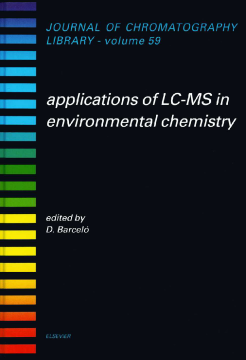
Additional Information
Book Details
Abstract
Looking at the literature available, it is clear that there is a need for a book on LC-MS applications in environmental analysis. This book endeavours to answer the following questions: What interface to use to solve "my detection problem"? Can I obtain enough sensitivity for the confirmation of my compound in real-world environmental samples? Is there enough structural information?
The present book aims to provide a critical evaluation of LC-MS in environmental chemistry and it is structured in different areas. Apart from an introductory section with fundamental aspects, application areas using the most relevant interfacing systems (PB, TSP, ES) for the characterization of environmental compounds are included. In this sense, applications are discussed on the characterization of the most relevant compounds of environmental interest such as pesticides, detergents, dyes, polar metabolites, waste streams, organotin compounds and marine toxins with comparison between different interfacing systems. Finally, new methods and strategies in LC-MS, e.g. the use of capillary electrophoresis, MS together with on-line post-column systems in LC-MS are also shown.
By the nature of its content and written as it is by experienced practitioners, the book is intended to serve as a practical reference for analytical chemists who need to use LC-MS in environmental studies. Each chapter includes sufficient references to the literature to serve as a valuable starting point and also contains detailed investigations. The broad spectrum of the book and its application to environmental priority compounds makes it unique in many ways.
This work fills a niche in both the environmental chemistry and mass spectrometry literature and provides researchers in this area, for the first time, a useful reference book on the environmental applications of LC-MS. This book is highly recommended for any researchers in the field of environmental analysis, especially those looking to move beyond GC-MS.
Journal of the American Chemical Society
